Used traditionally since Antiquity as incense in purification rites, aromatic smudge sticks, or "smudge sticks", are returning to our interiors to purify and deodorise the atmosphere, "ward off negative energies" and calm minds at home and in the office. These are made by gathering fresh or dried aromatic herbs into tight bundles. Once lit, they release pleasant scents while purifying air. Making your own bundles allows you to create personalised blends and even give them as gifts. Discover our step-by-step method to create homemade aromatic smudge sticks!
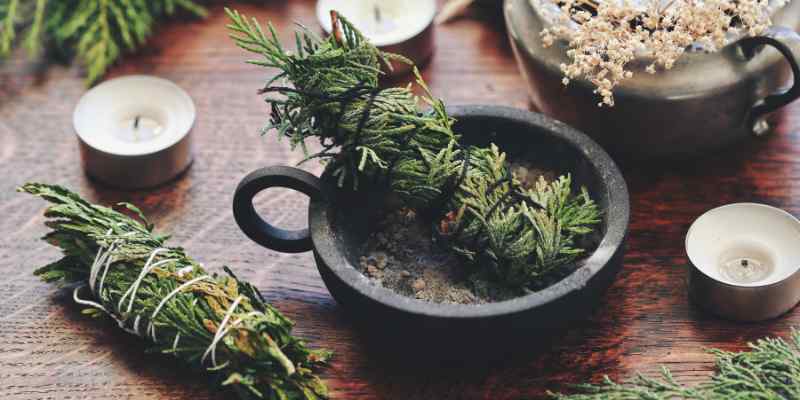
Which plants for a smudge stick?
Each herb has its own energetic and aromatic properties and brings a specific character to your smudge sticks. White sage (Salvia apiana), with its strong, earthy aroma, for example, is one of the most popular herbs for smudging. It is known for its powerful purifying properties. When used for smudging, lavender soothes anxiety, rosemary is said to promote mental clarity, and thyme strengthens protection. You can create your 100% homemade incense with a single herb such as sage or by combining several herbs according to your needs and wishes to produce a smoke beneficial for many "powers" (ready-made themed sticks are sold commercially labelled "inner peace", "space purification" or "emotional cleansing"...). To make your smudge stick, you will need to go out harvesting and fill your basket with a harvest of fresh herbs, which you may or may not dry. Depending on season, choose from flowering, fragrant perennials, strongly scented tree foliage or aromatic and medicinal herbs. In your garden, in autumn, keep dried flower tops, those very fragrant, such as tansy, mugwort, perovskias, lemon balm, santolina, rosemary, St John's wort, chamomile, or mint to include in your smudge sticks. Here is a non-exhaustive list of plants commonly used to make homemade smudges and their main properties:
- White sage: powerful purification, ideal for removing negative energies.
- Lavender: calming effect, reduces stress and promotes relaxation.
- Rosemary: mental clarity and protection, perfect for concentration.
- Thyme: antiseptic properties, used for protection and deep purification.
- Cedar: purifies spaces, promotes harmony.
- Mint: refreshing and energising, ideal for revitalising a space.
- Yarrow: purification, healing and protection, repairs wounded energies.
- Pine: renewal and purification, removes stagnant energies.
- Rose (petals): softness and love, brings compassion and tranquillity.
- Eucalyptus: powerful antiseptic, purifies air and aids breathing.
- Summer savoury: energising and stimulating, used to strengthen spirit and body.
- Common sage: purifying, helps clear negative energies and purify air.
- Juniper: used for protection and to repel negative energies.
- Bay laurel: protection and clairvoyance, used to strengthen intuition and wisdom.
- Sweetgrass (Hierochloe odorata): symbolises peace and spirituality, purifies.
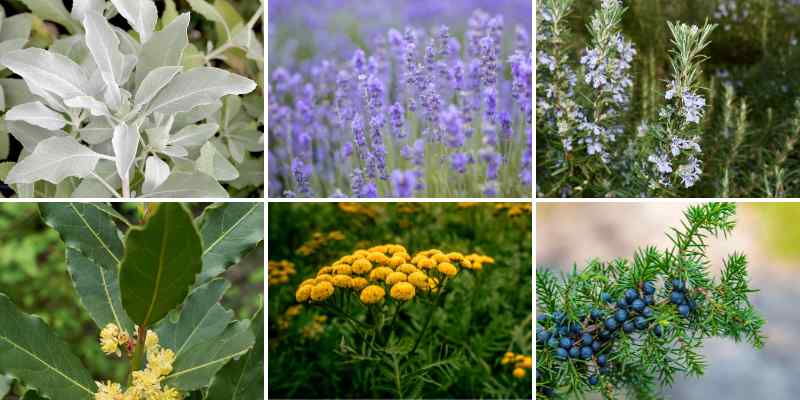
Materials needed
- Mix of herbs
- Natural cotton twine or unbleached string
- Pair of scissors
- Terracotta saucer, clay or ceramic bowl, shell, or any other heat-resistant container for burning smudge sticks
- Matches
How to make a smudge stick?
Harvesting herbs
If you harvest your own herbs, it is best to do so in the morning, once the dew has evaporated, but before sun gets too strong. This ensures essential oils in the plants are at their maximum concentration. Use clean scissors to cut stems, and avoid harvesting more than 20 to 30% of any one plant to avoid depleting it. Be sure to harvest or buy good-quality plants, preferably organic, to avoid pesticidal residues that could be inhaled during smudging.
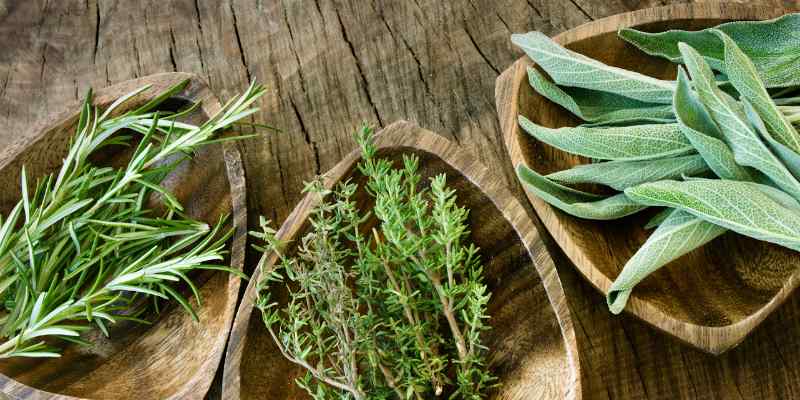
Drying herbs
Once herbs are harvested, we recommend drying them for a slow, steady burn. You can use fresh herbs, which will simply give off more smoke. The bundle should smoulder slowly, producing smoke rather than burning. Group stems into small bunches and tie them at the base with natural cotton twine. Hang bunches upside down in a dry, dark and well-ventilated place. Drying can take two weeks to a month, depending on ambient humidity and stem thickness. Herbs are ready when completely dry to the touch and crack slightly when bent. Drying time depends on season and chosen plants.
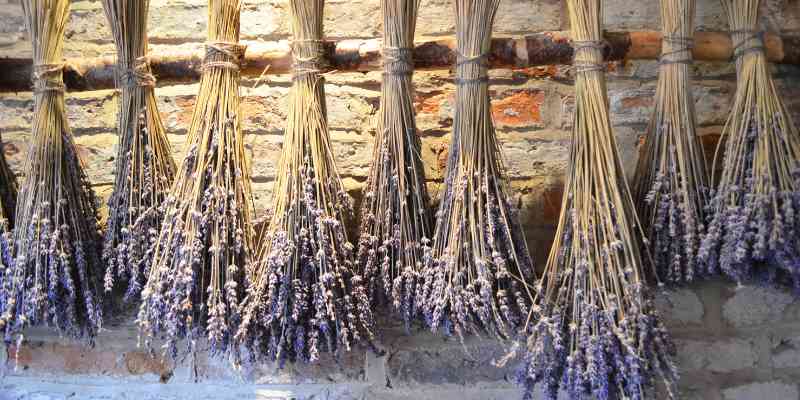
Preparing the bundles
When herbs are well dried, it is time to make your smudge sticks. You can make as many sticks as you wish, varying lengths (about 10 to 30 cm), however they should be neither too thin nor too thick. Form a compact bunch 2 to 5 cm in diameter, which will allow an even burn without the stick consuming too quickly. Bundles can be used several times.
- Start by firmly tying the base of the bunch. Wrap the twine in a spiral around the bunch up towards the other end. Then, wrap back down in a spiral to cross the turns of twine, creating a solid hold.
- Make sure to tighten everything well.
- If using several herbs, alternate layers to mix their properties well. Insert those with stiffer stems on the outside of the bunch and finer ones in the centre.
- Finish by making a node at the base. The bundle should be tight, but not too compact, to allow air to circulate during burning.
- Cut off stems that protrude at top and bottom and those escaping through the twine.
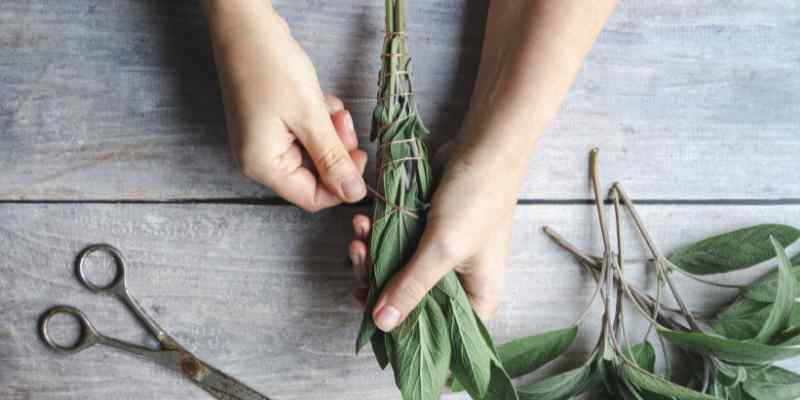
Which twine for smudge sticks?
Choice of twine is also important to ensure a clean burn, without emission of toxic fumes, while keeping herbs firmly in place. Ideal twine for your smudge sticks should be natural, undyed and chemically untreated. It should burn without leaving harmful residues. Natural cotton remains the simplest choice, but hemp, linen, jute, and even natural wool are excellent alternatives.
How to burn a smudge stick?
- Hold your smudge stick at an angle of about 45 degrees, tip pointing down. Light the end by holding it in the match flame. Let the herbs catch fire for a few seconds. It is important not to rush this step: the herbs must begin to burn evenly.
- Once the stick is alight, gently blow out the flame. The aim is to let the herbs smoulder slowly, producing dense smoke. When your smudge stick is well lit and smoke starts to appear, you can move it slowly around the room, waving it through the air to disperse smoke, then place it in a suitable container.
- To extinguish it, simply press the burning tip of the stick into the container until smoke ceases completely.
NB: Remember to ventilate the room well after smudging.
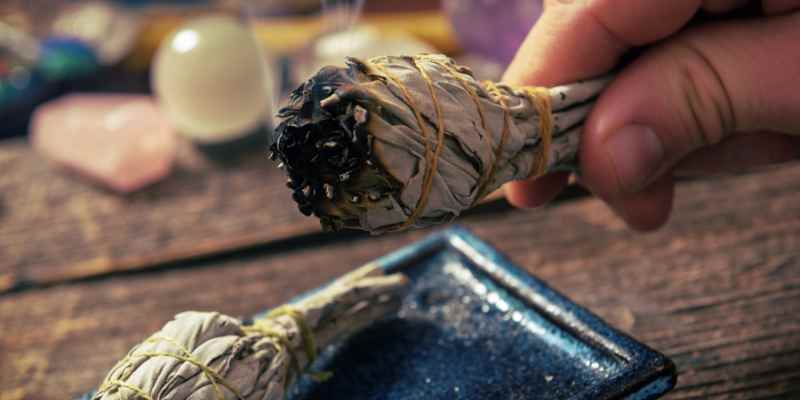































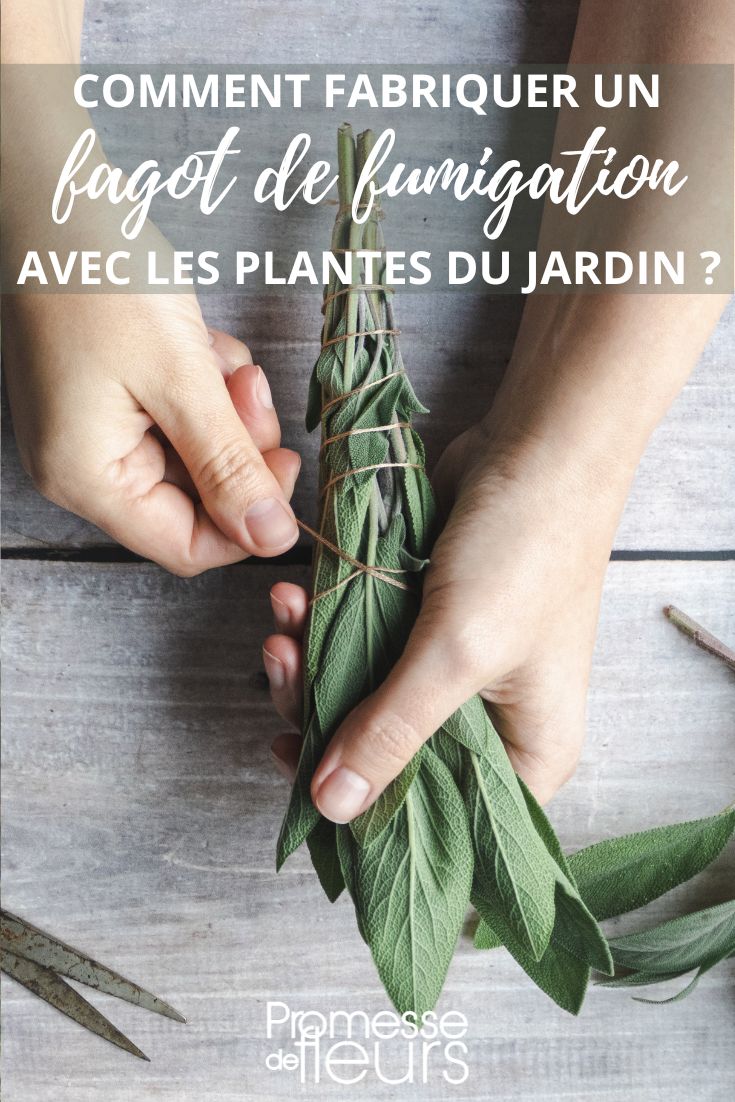
Comments